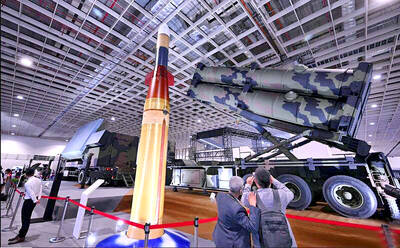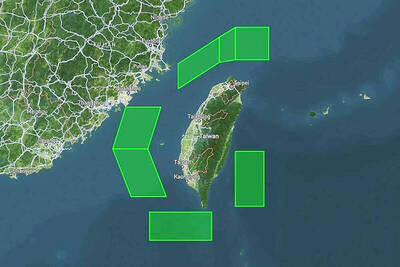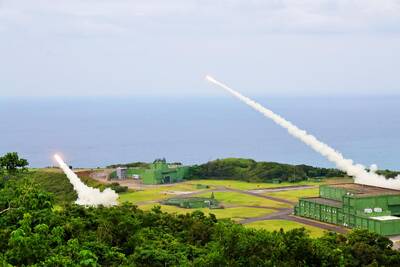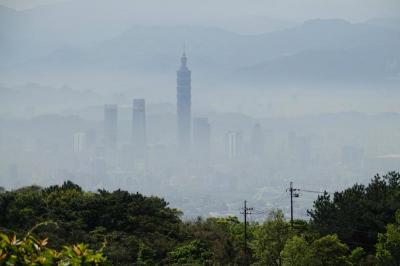Council for Cultural Affairs (CAA) Vice Chairman Wu Chin-fa (吳錦發) yesterday said that the council will start to review the historical value of Taiwan's only leprosy sanatorium, Happy Life Lo Sheng Sanatorium (樂生療養院) in Hsinjhuang, Taipei County, a move closer toward preserving the 70-year-old sanatorium.
"We had a meeting yesterday [Thursday] regarding this issue. We will abide by the newly revised Cultural Heritage Preservation Law (文化資產保存法) to preserve the sanatorium as a historical site," Wu told the Taipei Times yesterday.
Originally plan, the construction of the Taipei Mass Rapid Transit's (MRT) Hsinjhuang Line was set to force the demolition of the sanatorium and require over 300 patients to move.
In the face of the demolition plans, in desperation some patients last year began campaigning to save their home, sending petitions to various government agencies, including the Taipei County Government, the Executive Yuan, and the CAA.
To strike a balance between the public's interests in the MRT project and individual human rights, the Executive Yuan in October invited experts to study alternative plans that would allow the MRT line and the sanatorium to co-exist.
alternative plans
Last December, the panel of experts suggested the government could preserve the sanatorium by moving the MRT's power plant and water treatment plant underground.
"To preserve the culturally valuable sanatorium, we will need to move the two plants underground, dismantle part of the administrative building to make room for the underground construction, and rebuild it after the project is finished," said Liu Ke-chiang (劉可強), a professor at the Graduate Institute of Building and Planning at National Taiwan University, whom the Executive Yuan entrusted to hammer out an alternative plan.
According to Liu, the additional construction would cost the government about NT$541 million and delay the whole MRT project by about 18 months.
"The cost may sound high, but it is historically worthwhile and ecologically friendly," Liu said.
In Liu's alternative plan, the construction company would only have to excavate 847,500m3 of earth, far less than the 1.6 million cubic meters of earth estimated in the original plan.
But Taipei City's Department of Rapid Transit Systems said the price would be much higher.
Conflicting Estimates
According to the department's report to the Executive Yuan last December, changing the original plan to preserve the sanatorium would delay the project's completion by more than three years and cost more than NT$2 billion (US$63 million), partly due to compensation that construction contractors will ask for once the project is altered.
City planning academics saw the city's claim as an attempt to dodge responsibility.
"There is still room for negotiations with the construction companies. It depends on how much effort the transportation officials want to put in," Liu said.
The CAA said that it will serve as arbiter among the different government agencies to seek a solution for both sides.
"We will talk to the Taipei County Government and the Department of Rapid Transit Systems as soon as possible," Wu said.
"I believe it won't take too long to list the sanatorium as a historical site," he said.

Taiwan is to commence mass production of the Tien Kung (天弓, “Sky Bow”) III, IV and V missiles by the second quarter of this year if the legislature approves the government’s NT$1.25 trillion (US$39.78 billion) special defense budget, an official said yesterday. Commenting on condition of anonymity, a defense official with knowledge of the matter said that the advanced systems are expected to provide crucial capabilities against ballistic and cruise missiles for the proposed “T-Dome,” an advanced, multi-layered air defense network. The Tien Kung III is an air defense missile with a maximum interception altitude of 35km. The Tien Kung IV and V

The disruption of 941 flights in and out of Taiwan due to China’s large-scale military exercises was no accident, but rather the result of a “quasi-blockade” used to simulate creating the air and sea routes needed for an amphibious landing, a military expert said. The disruptions occurred on Tuesday and lasted about 10 hours as China conducted live-fire drills in the Taiwan Strait. The Civil Aviation Administration (CAA) said the exercises affected 857 international flights and 84 domestic flights, affecting more than 100,000 travelers. Su Tzu-yun (蘇紫雲), a research fellow at the government-sponsored Institute for National Defense and Security Research, said the air

Taiwan lacks effective and cost-efficient armaments to intercept rockets, making the planned “T-Dome” interception system necessary, two experts said on Tuesday. The concerns were raised after China’s military fired two waves of rockets during live-fire drills around Taiwan on Tuesday, part of two-day exercises code-named “Justice Mission 2025.” The first wave involved 17 rockets launched at 9am from Pingtan in China’s Fujian Province, according to Lieutenant General Hsieh Jih-sheng (謝日升) of the Office of the Deputy Chief of the General Staff for Intelligence at the Ministry of National Defense. Those rockets landed 70 nautical miles (129.6km) northeast of Keelung without flying over Taiwan,

A strong continental cold air mass is to bring pollutants to Taiwan from tomorrow, the Ministry of Environment said today, as it issued an “orange” air quality alert for most of the country. All of Taiwan except for Hualien and Taitung counties is to be under an “orange” air quality alert tomorrow, indicating air quality that is unhealthy for sensitive groups. In China, areas from Shandong to Shanghai have been enveloped in haze since Saturday, the ministry said in a news release. Yesterday, hourly concentrations of PM2.5 in these areas ranged from 65 to 160 micrograms per cubic meter (mg/m³), and pollutants were